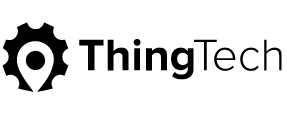Predicting Business Outcomes for Field Service Operations
Do you provide your customers with service or an outcome? By changing how you connect to data, you can achieve business outcomes that advance your field service operations and delight your customers.
Something is broken. Someone calls to explain what happened. You dispatch help to troubleshoot and fix the problem. This is how field service works, right?
Now imagine being able to prevent or predict equipment failures before they occur. The Internet of Things (IoT) offers a proactive path towards achieving digital transformation in most areas of your business. By combining real-time data with IoT analytics, field service managers can send technicians to a job knowing exactly what to repair or replace. Fleet managers gain real-time visibility into vehicle location and driver behavior. Maintenance managers can improve asset lifecycles and utilization. And finance managers can make more informed decisions on long-term capital planning.
But integration is the key. Because you’ll need more than one IoT technology to realize these goals. Before investing in the IoT, you should have a clear idea of what area of your business you’re trying to improve. Otherwise, you risk not collecting the right data.
For example, GPS and cellular tracking is an IoT technology. It’s become more common over recent years because it gives fleet managers the ability to know where their assets are and what they’re doing. Field manager seem most concerned with using this real-time data to locate and dispatch the closest technician to a job. But alone, it can cause problems. What if the closest technician doesn’t have the right tools or parts needed to complete the work order right then and there? Further, if the technician doesn’t know what needs to be fixed or how long it will take, how can the next work order be scheduled efficiently?
An IoT-enabled field service solution can have an incredible impact on productivity, efficiency and customer satisfaction when you operationalize this data into prescriptive and predictive analytics. A critical first step is identifying a specific use case for your IoT application. In other words, what area of the business are you looking to improve with data analytics? The next step is determining how you’ll measure success or ROI. As a field service manager, you’ll want to put yourself in the customer’s shoes. How might a customer feel when they discover that a machine is broken, resulting in unplanned downtime? Also consider the customer’s responsibility of reaching out to you and having to explain what’s wrong, which may or may not be accurate.
Towards this end, field managers need a proactive approach to servicing equipment in the field. It’s tempting to focus on providing better service. But the more connected you are to operational data, the more confident you’ll be moving from providing services to providing outcomes.
An end-to-end IoT platform can help bridge this gap. First, field service organizations need an asset management solution with parent-child asset relationship capabilities, which creates a hierarchical relationship between the assets and its parts or components. This enables you to automate work orders for regular checks and maintenance work on the asset. Also, if you have equipment that can be affected in cold weather conditions, for example, a weather API can be used to automate maintenance when the weather falls below freezing.
Second, now that you’re in a better position to predict equipment failure, the next step is to use GPS and cellular fleet tracking to map the location and movement of your service team. Once a work order is triggered using predictive analytics, your IoT platform should provide prescriptive analytics to determine which of the closest technicians has the availability, tools, and resources needed to complete the job.
Lastly, the IoT platform used in this scenario should deliver complete and contextualized details of the work order to desktop and mobile applications used by field service teams. The application should provide a complete view of the customer and work order, including parts, labor, repair/replacement procedures, and estimated time to completion. It shouldn’t be complicated to manage in real-time job assignments, dispatching workers to the right location, and verification of job completion.
The IoT is an art, but its implementation is a science. We understand that there’s tremendous pressure to compete for market share in your space. But the greatest pressure is keeping your existing customers happy, right?
Still reading and want to learn more? Contact us today to discuss your field service challenges or to schedule a demo.

